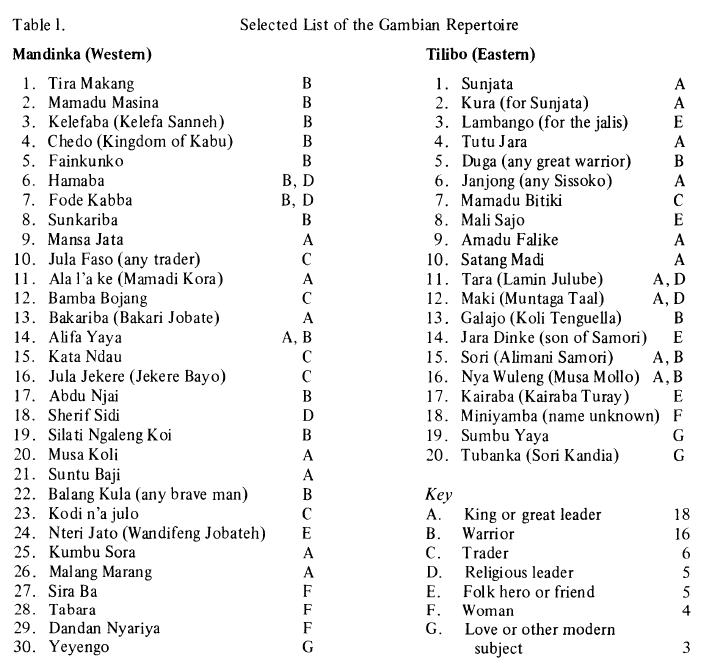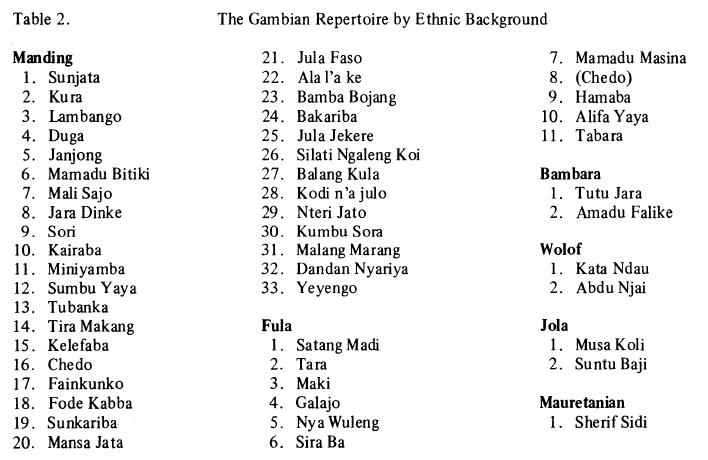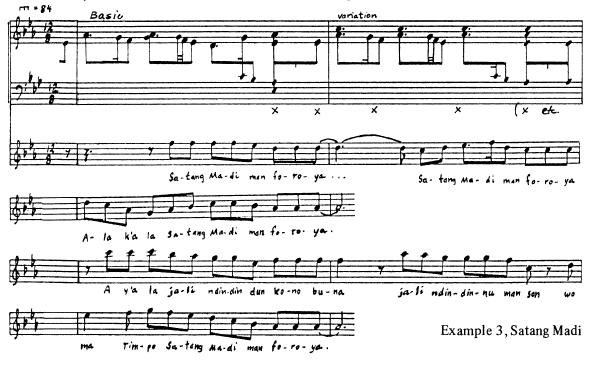hasiminka
Knight, Roderic. 1983. "Manding/Fula Relations as Reflected in the Manding Song Repertoire." African Music 6 (2): 37-47.
(Hasimi Ngai / Hasiminka)
p. 39
Table One . . . includes the best known, most often heard, or otherwise significant songs in the [Gambian] repertoire. In each column the top few songs are the oldest, and the bottom few are the youngest. The majority in each case fall somewhere in between (often in the nineteenth century), but no chronological ordering beyond this is indended, since it is often not possible to date a song exactly. Most of the songs bear the name of their owner as the title. Where they do not, his name is shown in parentheses next to the title. The letter code at the right represents the person's "claim to fame" or calling in life, as shown in the bottom of the list.

p. 40
Table Two shows the same fifty songs again, grouped this time by the ethnic background of the people commemorated.

pp. 44–45
Another side of the coin in Mandinka relations with their Fula hosts is shown in the song Satang Madi, an adaptation of Hasimi Ngai or Hasiminka. This song was composed for Madi Jallow of Timbo in the Futa Jallon region by a Manding jali who had visited him, performed for him, and found his generosity grossly lacking. He composed new words to malign Jallow, saying that he was not worthy of his noble birth, that he had gotten all of his young jali women pregnant, and other abuses that, true or not, achieved the desired effect (See Example 3).
| Satang Madi man foroya | Satang Madi is not of noble birth |
| Ala k'a la Satang Madi man foroya, | Allah says his Madi is not noble. |
| A y'a la jali ndindin dun kono buna | He's gotten his jali women pregnant |
| Jali ndindinu man song | The jali women had not agreed. |
| Woma, Timpo Satang Madi man foroya, | Thus, Satang Madi of Timpo is not of noble birth |

Kouyate, (El Hadj) Djeli Sory. 1992. Guinée: Anthologie du balafon mandingue. Vol 1. Buda, 92520-2.
(Hassiminka)
A song of praise for important and generous ladies.
Charry, Eric. 2000. Mande Music: Traditional and Modern Music of the Maninka and Mandinka of Western Africa. Chicago; London: University of Chicago Press.
(Hasiminka)
p. 153
Jawura is a popular dance rhythm from Kita, Mali that may have originated on the bala. . . . Djeli Mady Diabate (bala) and Kemogo Diabate (koni) from Kita also confirm its importance, citing Hasiminka and Mamaya as derivatives from Jawura (Diabate and Diabate 1990-per).